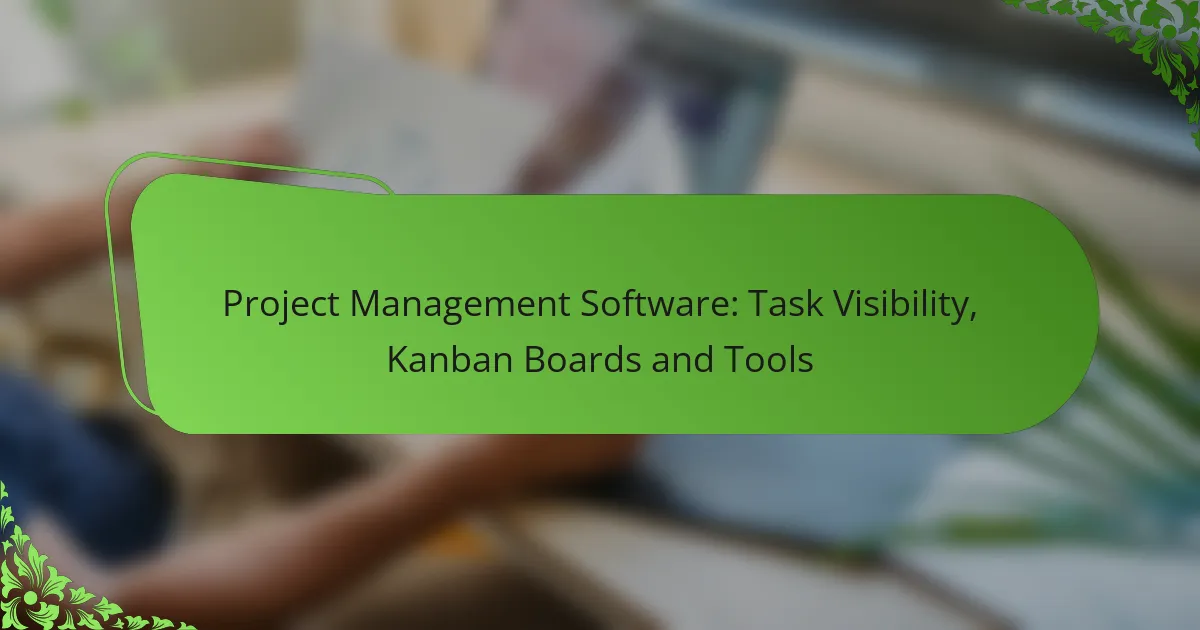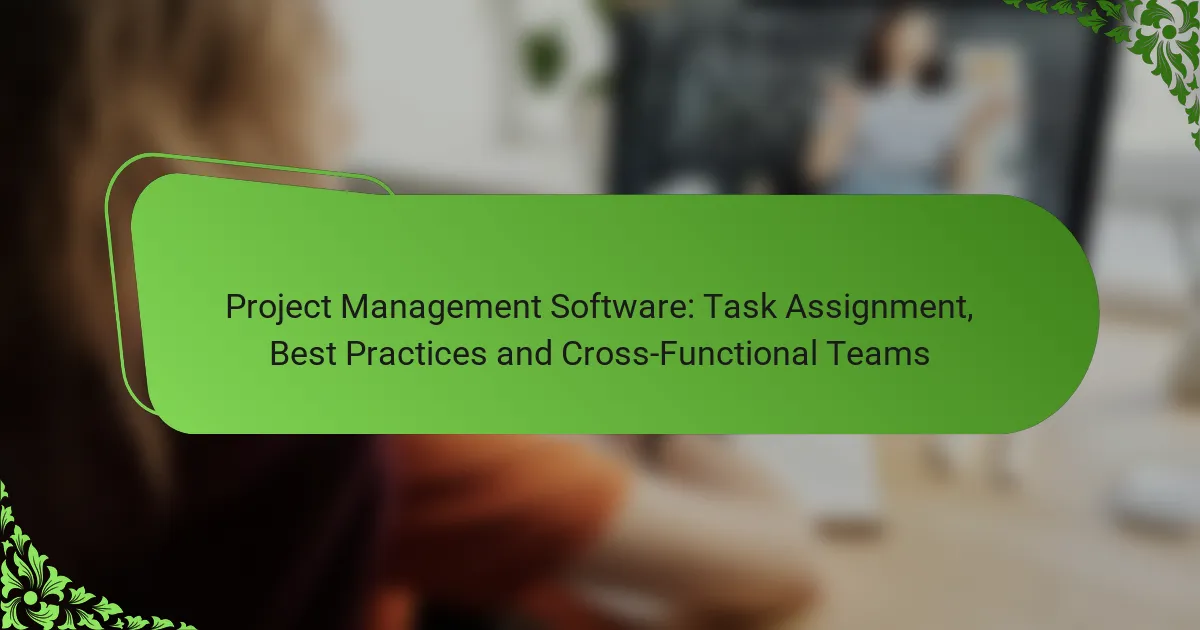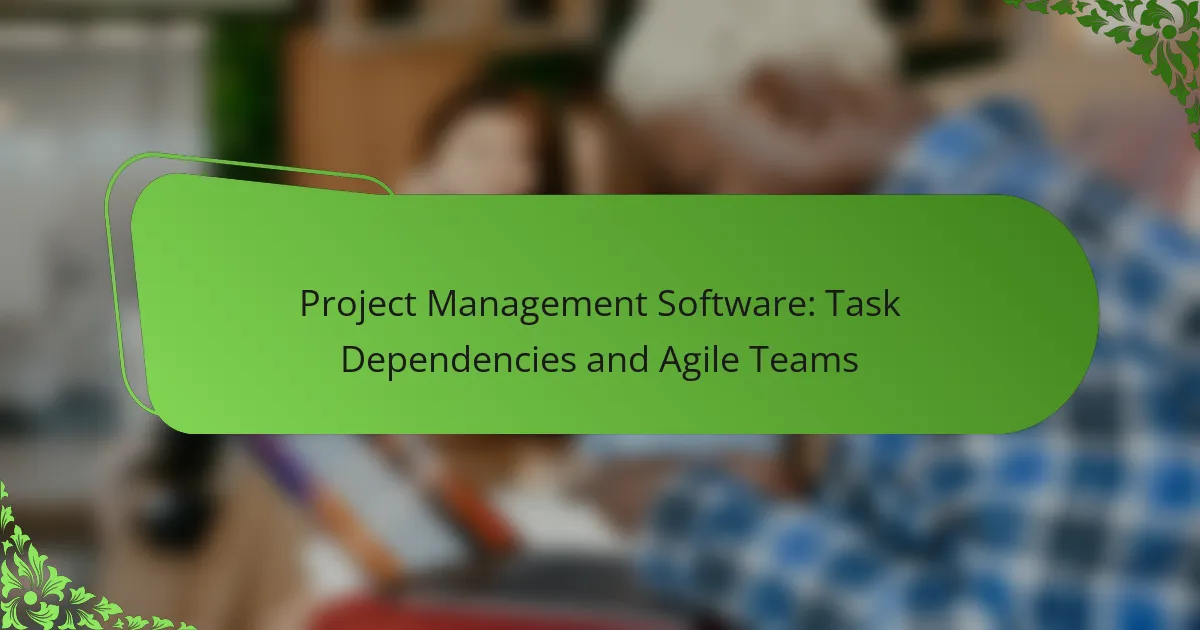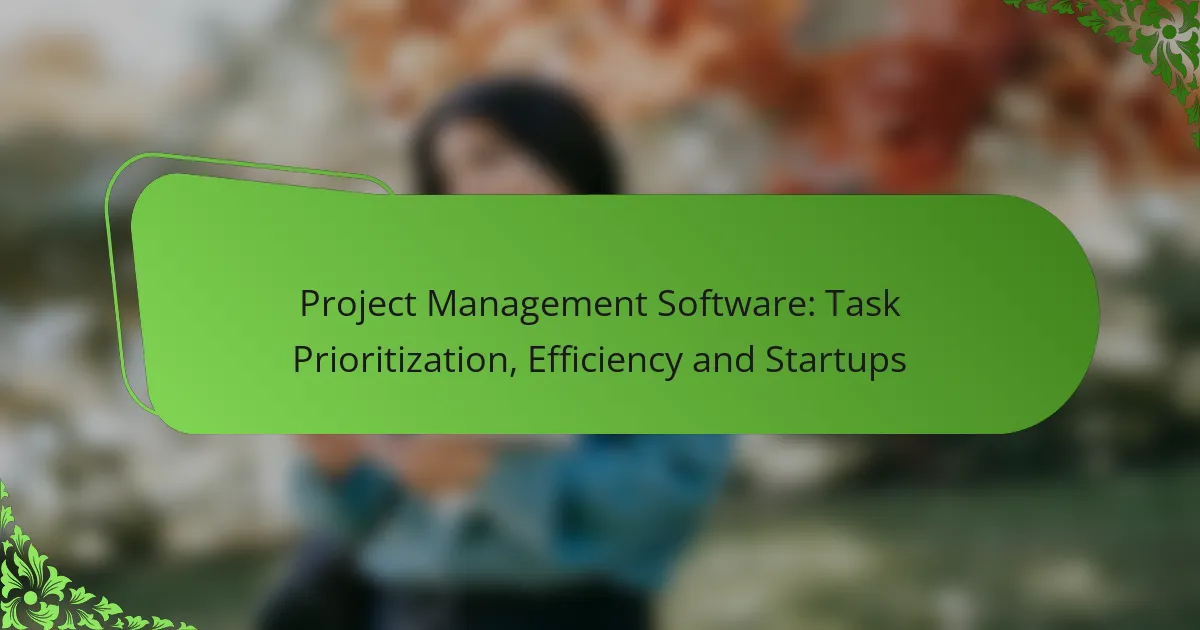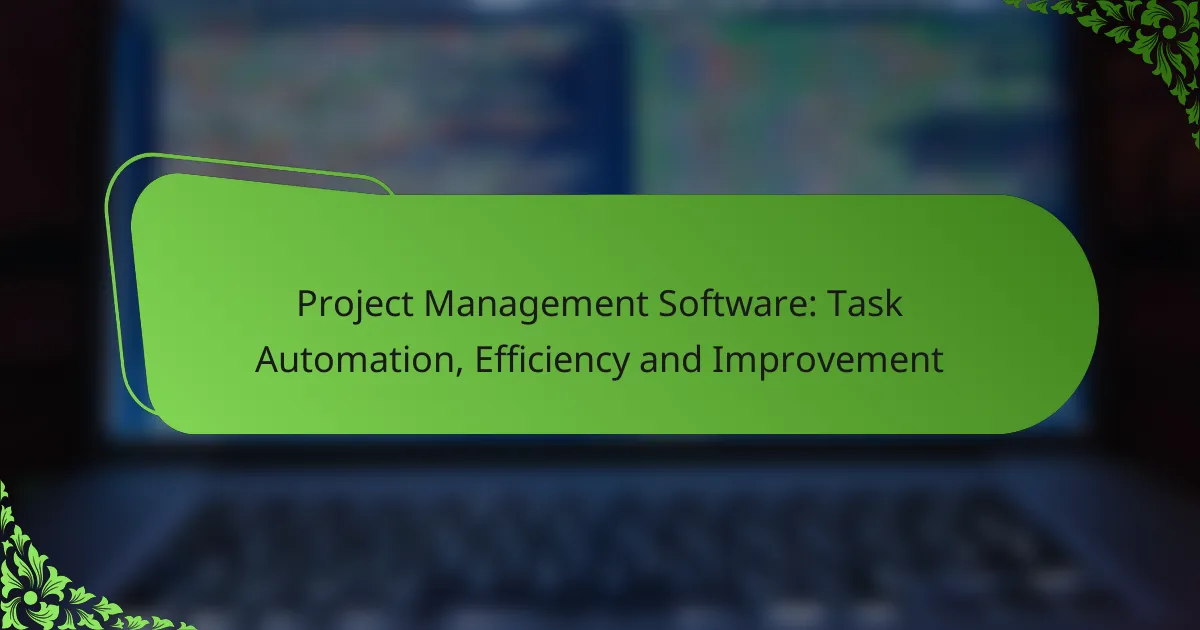Effective project management software is essential for enhancing task visibility and improving team collaboration. Tools like Trello, Asana, Monday.com, and ClickUp offer visual features such as Kanban boards, which allow users to easily track task progress and identify potential bottlenecks. When choosing the right software, it’s important to consider functionalities that streamline workflows and facilitate communication among team members.

What are the best project management software options for task visibility in Canada?
The best project management software options for task visibility in Canada include tools that enhance collaboration, streamline workflows, and provide clear visual representations of tasks. Popular choices like Trello, Asana, Monday.com, and ClickUp offer unique features tailored to different project management needs.
Trello for Kanban boards
Trello is a highly visual project management tool that uses Kanban boards to organize tasks. Each board consists of lists and cards, allowing teams to move tasks through various stages of completion. This setup provides immediate visibility into project progress and task assignments.
To get started with Trello, create boards for each project and customize lists to reflect your workflow stages, such as “To Do,” “In Progress,” and “Done.” Trello’s drag-and-drop functionality makes it easy to update task statuses in real time.
Asana for task tracking
Asana excels in task tracking by offering a structured approach to project management. Users can create tasks, assign them to team members, set deadlines, and monitor progress through various views, including lists and timelines. This ensures that everyone stays aligned on project goals.
For effective use of Asana, consider breaking larger projects into smaller tasks and utilizing subtasks for detailed tracking. Leverage Asana’s reporting features to identify bottlenecks and improve team productivity over time.
Monday.com for team collaboration
Monday.com is designed to enhance team collaboration through customizable workflows and visual project tracking. It allows teams to create boards that reflect their specific processes and includes features like file sharing, comments, and status updates to keep everyone informed.
To maximize Monday.com, set up boards that cater to different departments or projects, and use automation to streamline repetitive tasks. Regularly review board updates in team meetings to ensure transparency and accountability.
ClickUp for customizable workflows
ClickUp offers extensive customization options for workflows, making it suitable for teams with diverse project management needs. Users can tailor their dashboards, create custom statuses, and integrate various tools to enhance task visibility and management.
To effectively implement ClickUp, take advantage of its templates for different project types and utilize its goal-tracking features to align tasks with broader objectives. Regularly update your workflows based on team feedback to ensure they remain efficient and relevant.

How do Kanban boards improve task visibility?
Kanban boards enhance task visibility by providing a clear, visual layout of tasks and their statuses. This method allows team members to quickly assess progress and identify bottlenecks, leading to more efficient project management.
Visual representation of tasks
Kanban boards use columns to represent different stages of a project, such as “To Do,” “In Progress,” and “Done.” Each task is displayed as a card that moves across these columns, making it easy to see the current status of all tasks at a glance. This visual format helps teams prioritize work and allocate resources effectively.
For example, a software development team might use a Kanban board to track features being developed, tested, and deployed. This clarity aids in understanding workload distribution and deadlines.
Real-time updates on progress
One of the key benefits of Kanban boards is their ability to provide real-time updates on task progress. As team members move tasks from one column to another, everyone can instantly see changes, which fosters transparency. This immediacy helps in quickly addressing any issues that arise.
Many digital Kanban tools offer notifications and alerts for task updates, ensuring that all team members stay informed without needing constant meetings. This can significantly reduce the time spent on status updates.
Enhanced team collaboration
Kanban boards promote enhanced collaboration by making it easy for team members to see who is working on what. This visibility encourages communication and helps teams coordinate efforts more effectively. When everyone understands each other’s tasks, they can offer assistance or adjust priorities as needed.
For instance, if a team member notices a task is stalled, they can proactively reach out to help or suggest reallocating resources. This collaborative environment can lead to faster problem-solving and improved project outcomes.

What features should I look for in project management tools?
When selecting project management tools, prioritize features that enhance task visibility, facilitate collaboration, and streamline workflows. Key functionalities include task assignment, integration with existing tools, and robust reporting capabilities to track progress and performance.
Task assignment and tracking
Effective task assignment and tracking are essential for ensuring that team members know their responsibilities and deadlines. Look for tools that allow you to assign tasks to specific individuals, set due dates, and monitor progress through visual indicators. Features like notifications and reminders can help keep everyone accountable.
Consider tools that offer Kanban boards or Gantt charts for visual task management. These methods provide clear overviews of task statuses and dependencies, making it easier to identify bottlenecks and adjust workloads as necessary.
Integration with other tools
Integration with other software is crucial for a seamless workflow. Choose project management tools that can connect with communication platforms, file storage services, and time-tracking applications. This connectivity reduces the need to switch between different systems, enhancing productivity.
Evaluate the range of integrations offered by the tool. Popular integrations include Slack for communication, Google Drive for file sharing, and time-tracking tools like Toggl or Harvest. Ensure that the tool you select can easily connect with the applications your team already uses.
Reporting and analytics capabilities
Robust reporting and analytics capabilities are vital for assessing project performance and making informed decisions. Look for tools that provide customizable reports on task completion rates, resource allocation, and project timelines. These insights can help identify areas for improvement and inform future planning.
Consider tools that offer real-time dashboards for instant visibility into project health. Features like trend analysis and forecasting can also be beneficial, allowing teams to anticipate challenges and adjust strategies proactively.

How can I choose the right project management software?
Choosing the right project management software involves understanding your team’s specific needs, budget, and the software’s ability to integrate with existing tools. A well-selected platform enhances task visibility and streamlines workflows, ultimately improving project outcomes.
Evaluate team size and needs
Assessing your team size and specific needs is crucial when selecting project management software. Smaller teams may benefit from simpler tools that focus on task visibility, while larger teams might require more robust features like advanced reporting and collaboration options.
Consider the types of projects your team typically handles. For example, if your projects are highly collaborative, look for software that offers strong communication features and real-time updates. A tool that supports Kanban boards can also enhance task visibility for teams managing multiple projects simultaneously.
Consider budget constraints
Your budget plays a significant role in determining which project management software is suitable. Prices can vary widely, from free tools with limited features to premium options that may cost hundreds of dollars per month. Establish a budget range that aligns with your organization’s financial capabilities.
Keep in mind that some software offers tiered pricing based on features and team size. Evaluate whether the additional features justify the cost, and consider starting with a basic plan to test the software before committing to a more expensive option.
Assess integration capabilities
Integration capabilities are essential for ensuring that your project management software works seamlessly with other tools your team uses. Check if the software can integrate with communication platforms, file storage services, and other project management tools to maintain workflow efficiency.
Look for software that supports popular integrations, such as Slack, Google Drive, or Microsoft Teams. This will help enhance task visibility and collaboration across your team. Additionally, consider whether the software offers APIs for custom integrations, which can be beneficial for larger organizations with unique requirements.

What are the common challenges with project management software?
Common challenges with project management software include overcomplexity of features, lack of user adoption, and integration issues with existing tools. These obstacles can hinder productivity and limit the effectiveness of project management efforts.
Overcomplexity of features
Many project management tools offer a wide array of features that can overwhelm users. When software includes too many options, it can lead to confusion and inefficiency, as team members may struggle to find the tools they need for their specific tasks.
To mitigate this, choose software that aligns with your team’s needs and workflows. Focus on essential functionalities and avoid tools that require extensive training or have steep learning curves.
Lack of user adoption
A significant challenge is getting team members to adopt new project management software. If users find the software difficult to navigate or perceive it as unnecessary, they may resist using it, which undermines its intended benefits.
To encourage adoption, involve team members in the selection process and provide adequate training. Highlight the software’s advantages, such as improved task visibility and streamlined communication, to foster a positive attitude towards its use.
Integration issues with existing tools
Integration problems can arise when project management software does not seamlessly connect with other tools already in use, such as email platforms or file storage systems. This can lead to data silos and inefficient workflows.
Before selecting software, assess its compatibility with your current tools. Look for solutions that offer robust integration capabilities or APIs, allowing for smooth data transfer and communication between systems.






